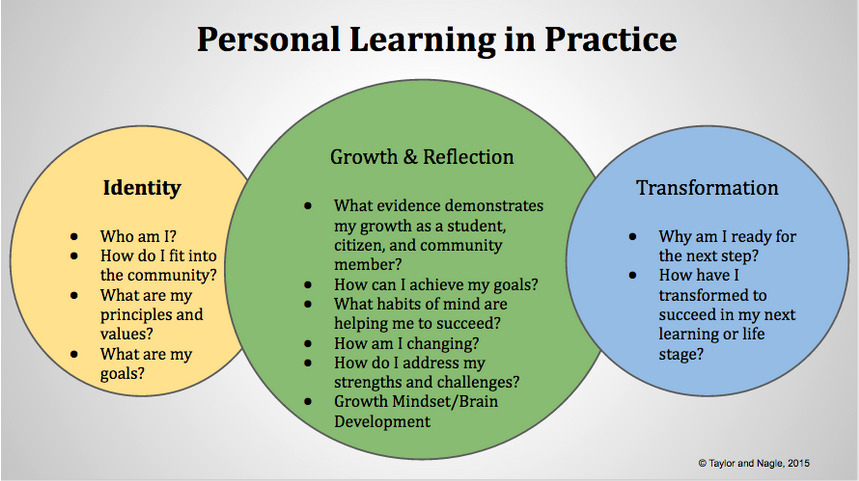Are Relationships the Key To Good Goals?
As the school year progresses, students should be working their way through the Identity stage of the Personal Learning Framework. As noted in our last blog post, not only can this serve as a great way to welcome students into the learning environment, it can also help educators begin to develop personalized relationships with students.
As teachers move their students through the Identity phase, they should be considering how students will bridge from the Identity phase of the Personal Learning Framework into the Growth and Reflection phase.

In the current model, students begin the bridging process through the identification of specific learning goals. It's important to understand that even if the elements of the Identity phase are not complete, teachers should be developing a learning progression that will land students in a place where they will be able to self-identify goals, monitor and reflect on growth, and independently repeat this process as they become independent learners. This is also a great place to incorporate concepts of growth mindset, mindfulness, and resilience.
But how can we implement this process in a way that increases student motivation and engagement? Too often I hear teachers pulling out the SMART goal model and too often I hear kids lamenting their inability to achieve goals not due to skill or subject, but because they just aren't engaged enough -- they lack the "want to".
Perhaps we should be looking back at the Identity phase as a dynamic, personalized landscape for the development of goals that really matter. By leveraging what we learn from students through their biographies, principles and values, and community, we could possibly help students develop more relevant, engaging, and meaningful goals that lead to heightened student interest and increased motivation.
For example, students might be encouraged to set goals related to their extracurricular activities, hobbies, or activities outside of school. What's vitally important is that students see the goal setting process as something that occurs throughout the fabric of their lives, in school and out.
By paying careful attention to the student's developing PLP, and especially the elements of the Identity page, educators may find that good, positive relationships lead to goal setting that is more meaningful, personalized, and productive